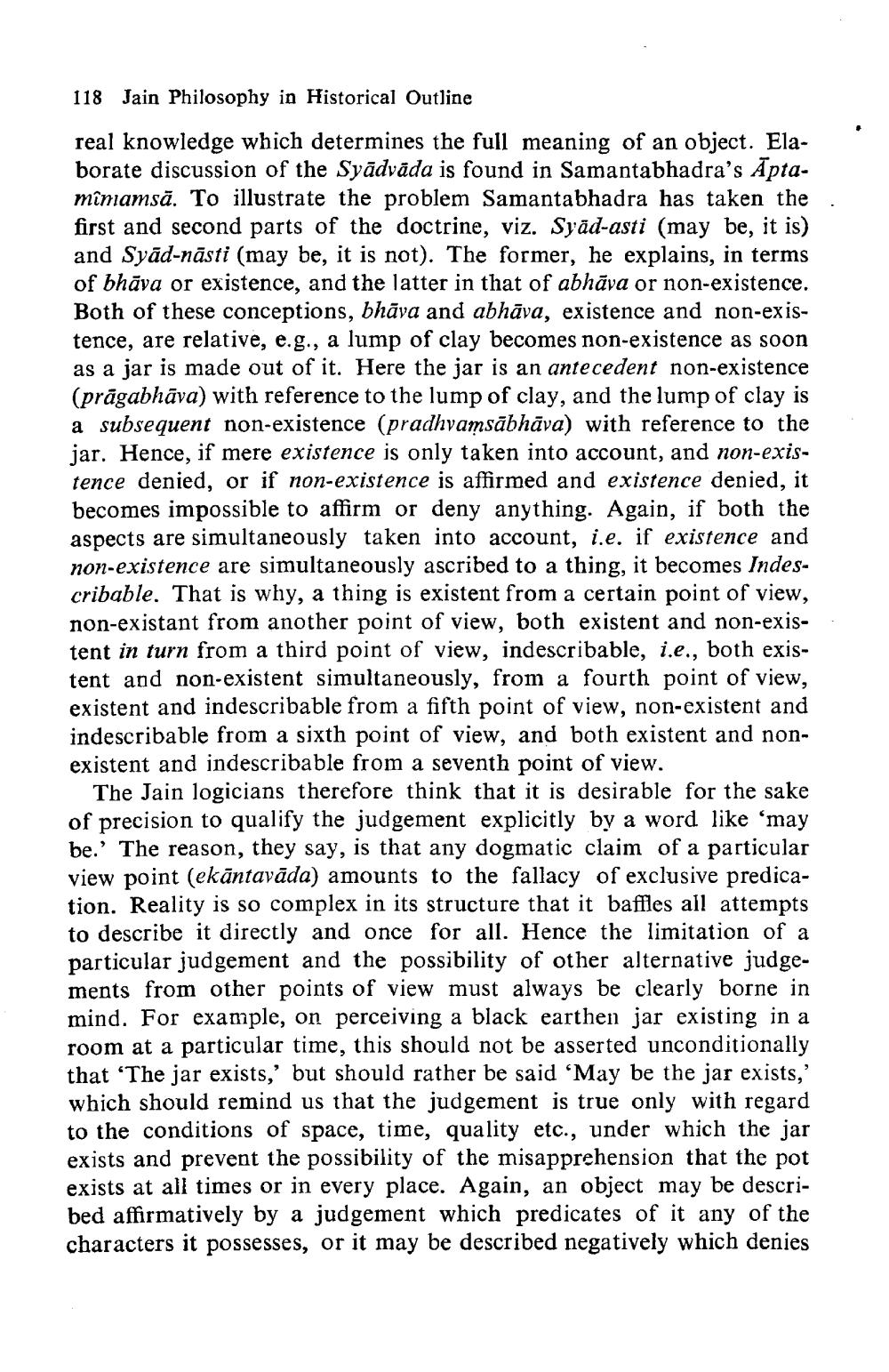________________
118 Jain Philosophy in Historical Outline
real knowledge which determines the full meaning of an object. Elaborate discussion of the Syādvāda is found in Samantabhadra's Aptamîmamsă. To illustrate the problem Samantabhadra has taken the first and second parts of the doctrine, viz. Syad-asti (may be, it is) and Syād-nāsti (may be, it is not). The former, he explains, in terms of bhāva or existence, and the latter in that of abhava or non-existence. Both of these conceptions, bhāva and abhāva, existence and non-existence, are relative, e.g., a lump of clay becomes non-existence as soon as a jar is made out of it. Here the jar is an antecedent non-existence (prāgabhāva) with reference to the lump of clay, and the lump of clay is a subsequent non-existence (pradhvamsābhāva) with reference to the jar. Hence, if mere existence is only taken into account, and non-existence denied, or if non-existence is affirmed and existence denied, it becomes impossible to affirm or deny anything. Again, if both the aspects are simultaneously taken into account, i.e. if existence and non-existence are simultaneously ascribed to a thing, it becomes Indescribable. That is why, a thing is existent from a certain point of view, non-existant from another point of view, both existent and non-existent in turn from a third point of view, indescribable, i.e., both existent and non-existent simultaneously, from a fourth point of view, existent and indescribable from a fifth point of view, non-existent and indescribable from a sixth point of view, and both existent and nonexistent and indescribable from a seventh point of view.
The Jain logicians therefore think that it is desirable for the sake of precision to qualify the judgement explicitly by a word like 'may be.' The reason, they say, is that any dogmatic claim of a particular view point (ekāntavāda) amounts to the fallacy of exclusive predication. Reality is so complex in its structure that it baffles all attempts to describe it directly and once for all. Hence the limitation of a particular judgement and the possibility of other alternative judgements from other points of view must always be clearly borne in mind. For example, on perceiving a black earthen jar existing in a room at a particular time, this should not be asserted unconditionally that 'The jar exists,' but should rather be said 'May be the jar exists,' which should remind us that the judgement is true only with regard to the conditions of space, time, quality etc., under which the jar exists and prevent the possibility of the misapprehension that the pot exists at all times or in every place. Again, an object may be described affirmatively by a judgement which predicates of it any of the characters it possesses, or it may be described negatively which denies




